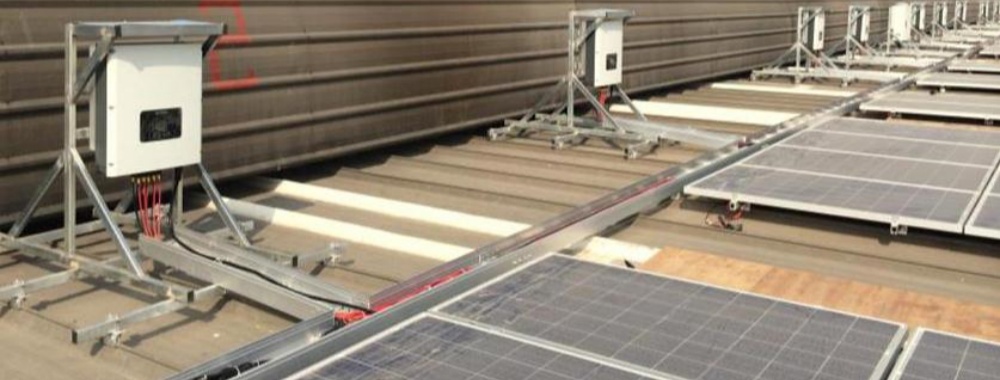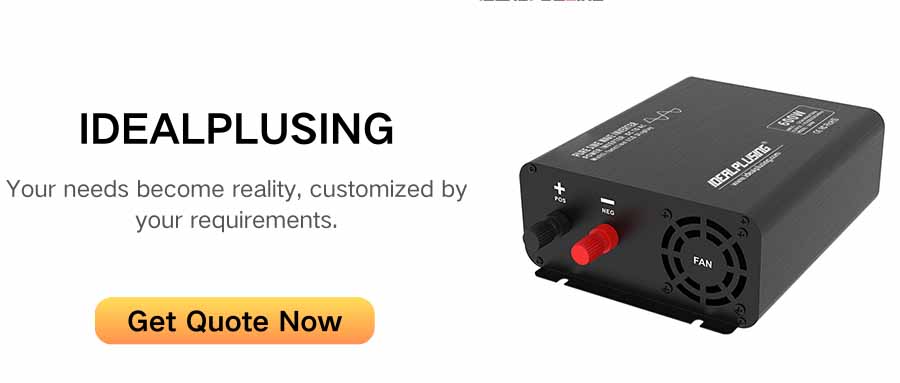An inverter is a device that converts direct current (DC) to alternating current (AC). A home inverter is suitable for home use. Many appliances in our daily lives, such as air conditioners, computers, refrigerators, and range hoods, all require inverters to convert DC power to the AC required for operation. Home inverters are characterized by high conversion efficiency and safety. In addition to common household appliances, inverters are also used in smaller appliances such as fans, mobile phones, and digital cameras. So, what parameters should you consider when choosing a home inverter? Let's take a look today.
Output Voltage Stability
In a photovoltaic system, the electricity generated by solar cells is first stored in batteries and then converted by an inverter into 220V or 380V AC power. However, due to the battery's own charge and discharge cycles, its output voltage can vary widely. For example, a nominal 12V battery can have a voltage range of 10.8-14.4V (exceeding this range can damage the battery). For a qualified inverter, when the input voltage varies within this range, the steady-state output voltage should not vary by more than plus minus 5% of the rated value. Furthermore, when the load experiences a sudden change, the output voltage should not deviate by more than ±10% of the rated value.
Output Voltage Waveform Distortion
For sinusoidal inverters, the maximum allowable waveform distortion (or harmonic content) should be specified. This is usually expressed as the total waveform distortion of the output voltage and should not exceed 5% (10% is allowed for single-phase output). Because the high-order harmonic currents output by the inverter can generate additional losses such as eddy currents in inductive loads, excessive inverter waveform distortion can cause severe heating of load components, compromising the safety of electrical equipment and significantly impacting system efficiency.
Rated Output Frequency
For loads including motors, such as washing machines and refrigerators, the optimal operating frequency is 50Hz. Excessively high or low frequencies can cause equipment overheating, reducing system efficiency and service life. Therefore, the inverter's output frequency should be relatively stable, typically around 50Hz, with a deviation within Plus/Minute (± 1%) under normal operating conditions.
Load Power Factor
This indicates the inverter's ability to handle inductive or capacitive loads. The load power factor of a sinusoidal inverter is 0.7-0.9, with a rated value of 0.9. For a given load power, a low inverter power factor requires a larger inverter capacity, which increases costs. This also increases the apparent power and current in the PV system's AC circuit, inevitably increasing losses and reducing system efficiency.
Inverter Efficiency
Inverter efficiency refers to the ratio of its output power to its input power under specified operating conditions, expressed as a percentage. Generally, the nominal efficiency of a PV inverter refers to the efficiency at 80% load with a purely resistive load. Due to the high overall cost of photovoltaic systems, PV inverter efficiency should be maximized to reduce system costs and improve the cost-effectiveness of PV systems. Currently, the nominal efficiency of mainstream inverters ranges from 80% to 95%, with small-power inverters requiring an efficiency of at least 85%. In the actual design of a PV system, it is important not only to select a high-efficiency inverter but also to optimize system configuration to ensure that the PV system load operates near its optimal efficiency point.
Rated output current
This indicates the rated output current of the inverter within a specified load power factor range. Some inverter products specify the rated output capacity, expressed in VA or kVA. The rated capacity of an inverter is the product of the rated output voltage and the rated output current when the output power factor is 1 (i.e., a purely resistive load).

Protection measures
A high-performance inverter should also have comprehensive protection features or measures to address various abnormal conditions that may occur during actual use, protecting the inverter itself and other system components from damage.
Starting characteristics
These characteristics characterize the inverter's ability to start under load and its performance during dynamic operation. The inverter should ensure reliable starting under rated load.
Noise
Power electronic equipment components such as transformers, filter inductors, electromagnetic switches, and fans all generate noise. During normal operation, the inverter's noise level should not exceed 80dB, and for small inverters, it should not exceed 65dB.
The above are the parameters to consider when selecting a home inverter. I hope this helps.
IDEALPLUSINGfocus on the research and development, sales and services in the fields of DC-DC power modules, AC-DC rectifier modules, DC-AC inverters, AC power supplies, DC power supplies, LED power supplies, chargers, rectifier systems, etc., providing personalized, efficient, reliable and cost-effective power solutions for all walks of life.
Thank you for considering our services.






